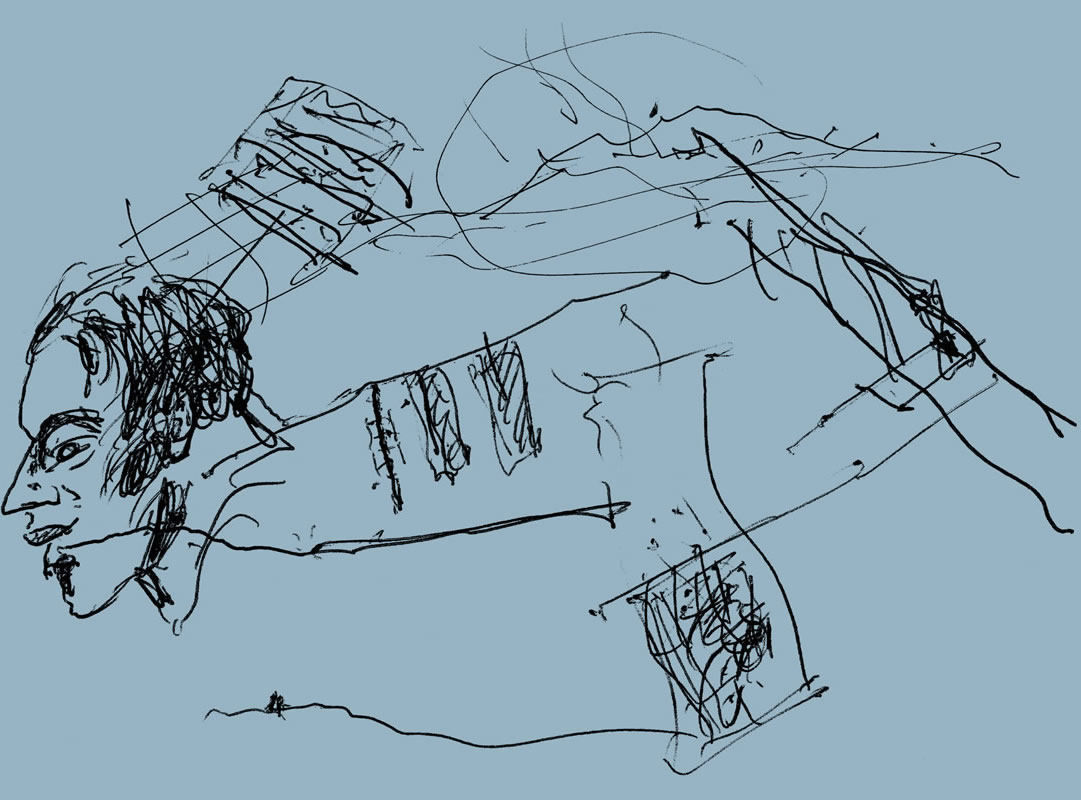Archigrest | Toposcape | La Cabina de La Curiosidad | Mien Ruys | Cesario Carena | MOTOElastico | Tropical Space | Worofila | Robust Architecture Workshop | Peris + Toral | Nomos | L’Atelier Senzu
The ground is sinking. A crater nearly a kilometre wide has opened in the Siberian forest, the earth giving way as the permafrost melts for the first time in 650,000 years. The revealed ground, depicted on the cover, is releasing thousands of tonnes of carbon into the atmosphere each year; but it also contains evidence of the Earth’s history.
Directly and indirectly, human activity leaves traces in the ground – evidence of lives lived, as well as destruction and violence. In Warsaw, a mound of war rubble has been turned into a memorial park, and layers of the city’s history made visible to the public. The neat strata depicted in archaeology and geology textbooks are often disrupted by conflict. In this issue’s keynote essay, Dima Srouji describes the ‘complex and entangled subterranean web of time, memory, life and death’ that lies below the surface in Gaza.
But the ground is also a place of rebirth and regrowth, when stewarded responsibly. In the Ecuadorian Andes, the Kichwa art and science of growing plants informs the choice of building materials, while a farming school in Sri Lanka revives ancient agricultural practices and construction techniques.
The ground itself is one of the oldest building materials. As contemporary experiments with multistorey compressed stabilised earth block housing in Eivissa and loadbearing rammed earth in Paris demonstrate, it is a radical act to rediscover this material, and unlearn the reliance on deeply carbon-intensive construction.
1514: Ground

Cover (above) Katie Orlinsky
The ancient permafrost is melting in Batagay, in Siberia, Russia. Having survived previous thaws, the region was deforested during the Soviet era to allow for tin mining, removing protection from the sun. The resulting crater – a ‘mega-slump’ – is the largest in the world, and still growing
Folio (lead image)
François Cointeraux popularised pisé – raw earth – construction following the French Revolution in 1789, celebrating its ability to provide good quality homes to people of all social classes
Keynote
Depth unknown
Dima Srouji
Building
Rubble with a cause: Warsaw Uprising Mound park in Warsaw, Poland, by Archigrest and Toposcape
Adam Przywara
Essay
Sands of time
Ali Karimi
Essay
Remediation works
Anjulie Rao
Building
Chaki Wasi market hall in Zumbahua, Ecuador, by La Cabina de la Curiosidad
Ana María Durán Calisto and Natalia Gandarillas
Reputations
Mien Ruys (1904–1999)
Leo den Dulk
Outrage
Dubai-on-Øresund
Kristina Rapacki
Revisit
Fornace Carena in Turin, Italy
Davide Tommaso Ferrando
Building
Terracotta workshop in Quảng Nam, Vietnam, by Tropical Space
Hếiu Y and Vương An Nguyên
In practice
Worofila
Nzinga B Mboup
Building
Medical centre in Kaya, Burkina Faso, by Nomos
Amadou Zeba
Building
Social Housing in Eivissa, Spain, by Peris+Toral Arquitectes
Rafael Gómez-Moriana
Building
Farmer Field School in Thirappane, Sri Lanka, by Robust Architecture Workshop
Shayari de Silva
Building
Pavilion Le Vau in Paris, France, by L’Atelier Senzu
George Kafka
The last page
The marooned church of Megalopoli
 The Architectural Review An online and print magazine about international design. Since 1896.
The Architectural Review An online and print magazine about international design. Since 1896.



